|
I learned recently that Illinois passed Senate Bill 1882, called the "Safe Pets" Act which governs dogs and cats sold in pet stores. The new law does not prevent pet stores in the state from selling animals which are sourced from breeders. This comes as no surprise. Petland, the most prolific pet store chain in the country which sells dogs, already has eight retail locations in Illinois. The state cannot enact a law which would affect commerce for Petland because the stores are already open. The new law does state the following (among other provisions):
Many of these local laws go much further than the new Illinois law and I first blogged about them last year. These are locations where there are no existing pet stores like Petland selling dogs. The lack of those retail locations means that municipalities have the ability to enact pre-emptive laws to keep the stores from opening in the first place. The local ordinances I have advanced in some cities in my state require pet shops to source animals from shelters and rescue groups, prohibiting them from getting animals from breeders, brokers or from rescue groups which obtain animals from breeders or brokers for compensation (often referred to as the "rescue model.") As I have written about before, I obviously support these ordinances, resolutions, bills and laws which are, at their core, consumer protection laws. The Illinois law has limitations because Petland stores are already open there, but the language of the law makes it clear that it is also focused on consumer protection. And for good reasons. The Internet is replete with stories about people who bought a dog at a pet store, only to have that dog be terribly ill or have some genetic defect which results either in thousands of dollars of veterinary bills to treat/manage or which results in the death of the animal. The CDC has done multiple studies about pet store dogs spreading diseases to people, in some cases resulting in litigation. Then there is the less publicized scam in buying a pet from store: when the person who buys the animal does not understand they have leased the animal and it does not belong to them. I've heard a number of arguments against these laws, none of which are persuasive for me and some of which are just absurd. The laws take away personal choice. No. They do not. I admittedly promote adoption of animals from shelters and rescue groups. As much as I would like others to feel the same way, I cannot force them to share my values through magical thinking. I know plenty of people who get animals from breeders and cannot be persuaded to do otherwise. If someone wants to get a dog from a breeder, these laws do not prevent them from doing that. In places which have enacted laws about pet shops, that sale is just not facilitated in a retail setting. That does not mean the person cannot seek out a breeder of their choice who does not sell animals in retail stores. I read a blog on the website for the American Kennel Club which claims, "the purpose of these measures is get at not only retailers, but also breeders." We hear all the time that no "reputable" breeder would ever sold a dog or cat in a store, so people who have chosen to breed animals either for love of the breed or as a source of income are not affected by these laws. They are free to sell those animals directly to consumers just like they always have. These laws are only aimed at shutting down "puppy mills". It is true that the fewer pet stores in our country which sell dogs from large dog breeding operations (which I consider mills regardless of how well the dogs are cared for), the less profitable those operations will be. But to say the laws are only enacted to try to close those places loses sight of the primary purposes for the laws. Consumer protection. Perhaps a time will come when enough of these laws are enacted across the country when it will have a huge impact on those people currently breeding dogs for sale in those stores. The more stores which close or which switch to the rescue model, the fewer places there will be for the dogs to be sold. That time is a long way off. Millions of dogs are bred in the United States each year and this is a huge industry. The dogs are sold on the internet on websites which look polished and which leave the impression the parent dogs are well cared for. Dogs are also sold at auctions and in some cases, the dogs are being purchased by rescue groups which claim they are saving the dogs they buy from a fate worse than death while at the same time remaining willfully ignorant of the dog or dogs who will take the place of the dog they bought at auction using the money they paid. The laws prevent people of color from getting a dog of their choice. This is a new argument I first heard a few months ago and the explanations go something like this: 1) Many shelters and rescue groups making adopting an animal incredibly difficult (this is often true) which; 2) negatively impacts people of color; so 3) those people who have not been able to get a pet from a shelter or a rescue group need the ability to get a pet of their choice from a pet store as an alternative. I am the first to admit that there are shelters and rescue groups which make adopting an animal so difficult that people just give up. There have been a couple of recent articles about this in the New York Times and in The Cut. We had a panel discussion as part of the No Kill in Motion series (from No Kill Movement) recently in which we talked about this subject. Organizations like CARE - Companions and Animals for Reform and Equity are working hard to shine a light not only on the lack of diversity in shelter leadership, but also on how difficult some shelters make it for people to adopt because of their judgment of the worthiness of those people. The work of CARE is invaluable and it is long past the time when we should be having these discussions about inclusion and equity. But for every shelter and rescue which makes adoption difficult, there are many more which are doing all they can to place pets in need by making adoption exceedingly easy by using open adoption counseling and providing animals who are fully vetted and microchipped, sometimes with the adoption fee being incredibly low or waived. To say that people who have been turned away from a shelter or rescue should go to a pet store as their next option is not compatible with the argument that there are scores of reputable breeders across the county who do not sell pets in stores. I plan to take up this issue of how these laws affect people of color with James Evans of CARE to get his take on the argument. I have written many times about the subject of puppy mills and pet stores. I have often wondered how different our country would be had the UDSA not tried to help struggling farmers some 70 years ago and recommended breeding dogs as a way to make money. We would still have dog shows and people would still breed dogs, but would we see the production and sale of millions of dogs a year like we do now while at the same time destroying millions of dogs in places we call shelters? We will never know. I have also wondered how people would feel if we had never sold dogs or cats in stores from commercial breeding operations (many of which house dogs in conditions we would consider criminal) and we suddenly started doing that. Would people be outraged? I'd like to think so. I hope a day comes when we see an end to the sale of dogs and cats in stores and when people instead get companion animals from shelters, rescues or from responsible breeders as a direct purchase. Stores are great for a lot of things. Furniture. Clothing. Food. Not for pets. It's time for that to end. The sooner the better. (image of pet store puppy courtesy of Hector Parayuelos)
0 Comments
September is Puppy Mill awareness month. I have not written about mills for a while so a new blog is overdue. I admit that it is prompted, in part, by events in my own area. I don’t live near a Petland at which people protest every weekend and there is only one insidious backyard breeder in my area of which I am aware (who has had dogs stolen because he keeps them in such poor conditions), but the subject of commercially bred dogs is never far from my mind. There are those who chant, “don’t breed or buy while shelter dogs die.” I’m not quite that absolute in my thinking. As unpopular as this opinion makes me with some people, I have no issue at all with people I call hobby breeders who breed dogs once in a blue moon for the love of the breed and who make little (if any) money from the process. My dentist breeds Black Russian Terriers and has been to the Westminster Dog Show before, having won Best in Breed with one of her dogs. Her dogs are incredibly well cared for and they never end up in shelters. Ever. She has also had shelter and rescue dogs in her home and we’ve talked about her fostering shelter dogs in the past. It may sound like a wonderful idea to end all dog breeding, but we all know that won’t happen as a universal change around the globe. It’s perfectly legal and as much as we would like people to adopt a dog from a shelter or a rescue group, some people just won’t for whatever reason. That is their right. I can’t count the number of conversations I’ve had with people who planned to get a dog from a breeder in which I talk about the benefits of adoption. At the end of the day, they use the information as they see fit. I cannot force them to adopt because I see it as the right and responsible thing to do. Commercial breeding of dogs is another matter entirely. I’ve written on this topic many times. To find my past blogs, you can clip on the keyword “puppy mill” on the right hand side of this page. I call commercial breeding of dogs puppy mills because that is what they are – they breed puppies and they produce them in volume much like a textile mill of wood mill. In the case of Smith v. Humane Society of the United States, 519 S.W. 3D 789, 801 (2017), a puppy mill was defined as a commercial farming operation in which purebred dogs are raised in large numbers. That’s good enough for me. I know that not all mills are created equal. Some are places were dogs are socialized, get exercise and get wonderful veterinary care. Some, however, are anything but that. They are cruel places where dogs are bred repeatedly until they cease to be profitable, never leaving the small cages to which they are confined (which means no form of exercise of even walking on a solid surface) and they don’t get veterinary care. In these operations, the dogs truly are seen as a commodity and a source of profit. It’s all about the money. Dogs from these commercial operations are sold in stores, creating a complete disconnect between the locations were the dogs come from and the products being sold. When people see a puppy in a store, they are blinded by the cuteness they see, giving little thought to where that dog came from, how he or she was raised, the conditions of the parents and even the health of the puppy him or herself. If each dog was displayed with images and video clips from the breeding operation which were honest, people would be appalled, infuriated and sickened. (Buying a pet store dog has shown that it can actually make people sick in a very real sense based on investigations by the CDC). A friend who bought a dog in a store years ago told me she did so because the dog looked so pitiful, was already there and she knew they wouldn’t sent him back if he wasn’t sold. She knew that someone was going to buy him and she felt that by taking him home, she was saving him from the store. Talk about emotional blackmail. If we ever hope to bring an end to the commercial dog breeding industry which treats dogs as livestock, with less regard for their well-being in many cases than livestock bred to be part of our food supply, we simply must stop buying what stores are selling. If we know we are not capable of walking away from a puppy in a pet store for emotional reasons, the only solution is to not enter the store at all. There are plenty of stores which sell pet supplies which don’t sell dogs (or kittens), some of which have animals available for adoption from local shelters and rescue groups. Like so many other things in our society, we have to draw a line in the sand and just say no. No to the multi-million dollar industry which started with a USDA promotion decades ago which was intended to help farmers and quickly got completely out of control. No to the industry which treats the dogs with whom we share our homes as commodities to be abused, neglected and treated as disposable when they no longer bring in enough money fast enough. No to the industry which takes us hostage by exploiting our emotional bonds with dogs and our desire to help them find better lives with us. (image courtesy of National Mill Dog Rescue, Inc.) Only when we stop buying dogs in stores will the industry cease to be profitable enough to continue the way it has for decades and those farming dogs may go back to farming another commodity instead. We cannot rely on the USDA to police the very kennels to which is issues licenses. It is an inherent conflict of interest which cannot be overcome. We change our society and our culture by changing our own personal behavior so the industry knows what we value and what we will and will not tolerate.
The dogs in this image are from a local brokering operation near where I live. The local breeder says she is part of a “team” of 13 families who breed and sell dogs. In order to buy a puppy from her, you have to make a non-refundable deposit of half the price of the dog. You cannot see the conditions from which the puppy comes and you have to make an appointment to meet your new puppy on a Tuesday or Thursday. The prices for these dogs make this about profit, not about love for a breed. This is a thriving business. I guess I should not be surprised that the dogs are listed on the website as “new products.” Some of the dogs are listed as XXS and weigh a pound. Just. Say. No. I’m sure I’ve said it before, but it bears repeating. I meet some of the most amazing people thanks to my animal welfare advocacy. Most are just normal people like you and me who are on a mission related to animals, using their superpowers for the good of us all. I’ve only met a handful of these folks in person, but thanks to the inter-connectivity of our world provided by video conferencing and email, I still feel as though I know them. And I am proud to say I do. I first learned about “Pete Paxton” last fall when I learned about his book (co-written with Gene Stone) called Rescue Dogs: Where They Come From, Why They Act the Way They Do, and How to Love Them Well. Pete’s name is in quotes because I honestly have no idea what his real name is, You see, he’s an undercover investigator who has done incredible work for the Companion Animal Protection Society. (I encourage you to visit the CAPS website to help further your education). Pete has been to over 700 puppy mills, hundreds of pet stores, and has worked undercover at some of the biggest mills in the United States. Rescue Dogs is aimed at exposing mills and explaining how the public can help fight them by adopting dogs. The book also explains finding a good shelter or foster group, dog training tips, how to rescue stray/abuse dogs, and busts myths about shelter dogs being “broken” in some way. I have long railed against the commercial dog breeding industry and have long supported rescue and advocacy groups which help dogs saved from mills and which educate the public toward bringing an end to the industry. I’ve worked on local laws which keep national pet supply chains from setting up shop in communities and importing sick dogs from puppy mills which can, in turn, make people sick. I’ve fought state legislation which would allow pet supply chains to grow roots in my state and further erode the humane treatment of dogs in a culture lost in time compared to the values regarding dogs in the rest of the country. When I heard about Pete’s book and his undercover work in the mills themselves, I just had to read it The first part of Rescue Dogs was a hard read for me, but not in a bad way. As you would imagine, there is something quite criminal (and, I would argue, nefarious) about the way many people in our society treat dogs for their financial gain. It is heartbreaking, infuriating and mind-boggling. And I say that as a person who has never walked a path remotely close to the one walked by Pete. I cannot possibly imagine the mental and emotional toll taken on people who take on fake identities and put themselves in the bowels of hell in order to take down the very people whose behavior we find abhorrent. I am confident that we cannot possibly understand what Pete and others like him have endured for the sake of dogs and for the sake of all of us. Could you pretend to be someone you are not and work in a place where dogs are abused, neglected or killed on a regular basis all for the sake of money to collect evidence? I know I could not. Which is why I consider Pete one of my animal superheroes. The second part of the book was incredibly informative. I think that most people in the shelter and rescue world assume the public knows all about rescue dogs, where they come from, how wonderful they are and why adopting a rescue dog is such a compelling choice. Many people just do not know, even if we think they should. Thanks to Pete’s book, now they can. He goes into great depth about where many of these dogs come from, how they think and how to make them members of our families – as opposed to buying dogs from the million dollar industry which has no regard for their well-being, viewing them not as sentient creatures but as things. Pete was kind enough to help me introduce you to information which goes beyond the book through the Q&A that follows. I think it’s helpful for me to say a few things about the book, but I want you to learn something information not found in the book to entice you to read it. You can find Rescue Dogs on all major book selling platforms and at your local bookstore. I hope you enjoy our exchange. You repeatedly use the phrase “puppy mill” in the book. I also use this phrase as a reflection of volume of dogs produced as well as the conditions in which they live. What does that phrase mean to you? To me, “puppy mill” refers to any facility or person who raises dogs for profit. I realize that puts individuals who sell a litter of puppies every two years to neighbors into that category. However, I use the term “puppy mill” to refer to anyone that is part of a system that results in dogs being killed in shelters and exploited for human gain. Whether a facility keeps dogs in the house or a kennel, has two dogs or a hundred, or is licensed or not, they are contributing to that system. Most people who love animals would have an incredibly difficult time investigating undercover like you did while staying in character. Your work must have been difficult beyond description. How were you able to stay so focused to see the investigations through to collect enough evidence? I appreciate the kind words. I’d like to say I’m just that tough, but I think part of it relies on my personality. I enjoy taking risks and improvising puts me in my comfort zone. Undercover work does involve suffering moral injury, but it also involves Adrenalin. Whether it’s a lot or a little, the Adrenalin is often there, and if you enjoy taking risks than it changes some situations that would normally repulse you into ones you want to dive into. Essentially, it’s the work itself that keeps me motivated, which I believe is true for any professional who enjoys their job. In specific cases, though, it is knowing that if I quit, I’m letting victims down. In most undercover investigations, there’s no second chance to get the evidence. If you lose patience or will, it means everything you’ve seen animals suffer for will be for nothing. When I started doing investigations and would sometimes complain about stress to friends and family members, they would tell me I should walk away from cases and take care of myself. I would tell them instead to remind me that anything I’m going through is nothing compared to what the victims I’m documenting are going through. Friends who used to tell me, “Take care of yourself,” now tell me, “Cowboy up and stop whining.” It’s quite motivating. Do you still do undercover work to this day? I would imagine that someone can only do that kind of work for a certain amount of time before they need to take a break. I still work undercover, and much of it still for the Companion Animal Protection Society, which I mention in Rescue Dogs. I take breaks when needed, sometimes for weeks at a time depending on how many reports from past work and research for future work I have to keep me busy. Enough time behind a computer and I’m dying to go back in the field. Stopping to write Rescue Dogs was a particularly long and unusual break for me. It was a difficult process going through so many old case notes and videos to verify details and write about things from years ago in a narrative manner. My field notes allow me to remove emotions from the context of evidence. Rescue Dogs had me write about that evidence in an emotional manner, in which my thoughts and feelings were as much the focus as the victims concerning them. At times it was cathartic, and at times it made it impossible to sleep. In the end, I’m very grateful I did it and that authors Gene Stone and Nick Bromley worked the entire process with me. You write about dogs you met during your investigative work you wanted to help but could not because it would have blown your cover. Are there any specific dogs who haunt you or do you have any regrets? This is where things will get dark. There are so many dogs that haunt me that the vast majority of them are not even mentioned in Rescue Dogs because there was no need to drag readers through the memories of so much cruelty, when one story alone could make the point. It was painfully difficult to select which dogs would be used in stories. In every investigation I’ve done, whether of a puppy mill, factory farm, slaughterhouse, or commercial fishing boat, there are victims whose stories are never told publicly. Often, it’s that there’s so many victims that it’s not possible to concisely explain what happened to them all in a video or interview. Other times, it’s that some victims are part of a crime that is irrelevant to other evidence the press or a client wants to focus on. If you ever see a video about an animal cruelty case, you should know that you’re not seeing half of what happened. You’re only seeing enough to try to keep your attention so you can then read about what you can do to help without shutting the video off. There are so many dogs I want to mention whose individual stories are not told in Rescue Dogs that I feel like I’m suffocating under them. However, the reality is that I’ve tried to tell those stories to people. I’ve tried writing about them, explaining them in person, and discussing them in interviews. It’s simply too much for people to handle. It drags people through emotional turmoil and isn’t necessary to make them understand a subject. The problem I have is that while undercover, I very rarely get an opportunity to help animals. I have seen many dogs suffer and die without saving them. For so many to be lost in a bigger picture, without their stories told, I feel like I’m betraying them and not giving them the final dignity they deserve. I have been in so many morally ambiguous situations that shame and pride have often been synonymous for me. Choosing which victims will have their stories told is another one of those situations, but I believe we chose well in Rescue Dogs. I imagine you have testified numerous times regarding your investigations. Do you feel the legal process works to hold breeders accountable or is the system (and laws) not in keeping with public values? You may be surprised to learn I’ve rarely had to testify in court. Most of the time, when a defendant has so much evidence piled against them that they are dead to rights, they plead out. That said, I’ve testified in front a jury, without a jury, in front a grand jury, and dealt with both good and bad law enforcement at the county, city, state, and federal level. Here’s the short version: The system doesn’t work for animals. Here’s the longer version: As written, most cruelty statutes make causing unnecessary suffering a violation. You’d think that would make it pretty easy to bust breeders who don’t treat dogs’ wounds, leave them to the elements, or let their teeth rot in their heads. The problem is that culture supersedes enforcement. The vast majority of breeding dogs are in commercial kennels, and the vast majority of those kennels are in rural areas where commercially bred dogs are treated as livestock. In fact, dogs are often seen as an alternative livestock that can be more profitable than other animals. Compared to hogs, for example, puppies are more profitable by the head and you can keep a larger number of breeding stock in a smaller amount of space. Most states have exemptions to cruelty statutes if an act that would normally be considered illegal (such as mutilating an animal without anesthesia) is a routine operation on a farm. The difference between legal cruelty and illegal cruelty becomes so difficult to discern that cruelty laws are rarely ever enforced on farms. Since puppy mills are seen by farmers as the same as hog farms or dairies, local law enforcement typically ignores cruelty complaints about puppy mills just as they do hog farms and dairies. Furthermore, many commercial kennels are licensed by the US Department of Agriculture. The same agency that inspects slaughterhouses inspect dog breeding kennels. That agency has a dual motive of enforcing regulations while promoting the industries they license. The more enforcement actions they take, the more they are cracking down on an industry they want to promote. Therefore, the USDA notoriously lets violations go. I’ve seen USDA inspectors ignore dogs dying in cages and even warn people ahead of time they will be inspected. Many inspectors prefer to be friendly with breeders instead of confrontational with them. To assist inspectors, the USDA has a policy called “teachable moments,” allowing inspectors to tell the breeders to fix violations on their own instead of them even been written in a report. When desensitization to animal cruelty, law enforcement corruption, and government corruption come together, I call it a “culture of cruelty.” Commercial dog kennels often exist in this culture. I have been unapologetic in my criticism of rescue groups that buy dogs at auction and call it rescue. What do you think about rescuers and rescue groups that buy dogs at auctions and make it sound like they have done something good (while showing no regard for the dogs who will take the place of the dogs they paid for)? I applaud your criticism. Activists buying dogs at auctions provide funding for puppy millers to buy more dogs and keep their operations going. Many puppy millers have rescue groups take their spent breeding dogs, but breeders will have no incentive to do so if they can profit from selling the dogs instead. What is the single most important thing you think people need to know about commercial dog breeding operations in order to deter them from buying dogs in pet stores? I have two single most important things to mention. For commercial dog breeding kennels, you should know that most of them are worse than you’d imagine. For pet stores, you should know that most lie to you about their breeders in ways that are bold and ridiculous, but clever. Even commercial dog kennels that are clean and have few dogs frequently have problems such as severe dental issues for dogs. Dogs also frequently suffer from anxiety being kept in cages and pens. There is no part of the Animal Welfare Act (USDA’s standards for licensed puppy mills) that has anything to do with dogs’ psychological well-being. It covers cage size, cleaning regulations, and even regulations for lighting, but even puppy mills that follow the standards have no rules make sure their dogs are actually happy. Pet stores frequently show videos of breeders with dogs and puppies running in exercise yards, and point to a part of the Animal Welfare Act that says breeders have to regularly exercise their dogs. The closest I’ve ever seen a breeder come to actually following the exercise regulation is to occasionally put dogs into pens larger than the dogs’ cages or runs. Pet stores show videos of dogs running through lush green yards, which if dogs were to actually be in every day, would be worn down to dirt. Pet stores will lie and say their breeders keep dogs in their homes, have only a few dogs instead of hundreds, play with the dogs all the time, and treat the dogs like family. Most customers don’t know how to disprove photos and videos shown to them as though they are fact, or to contradict someone who says they personally visit breeders selling to a store. The simple reality that I’ve seen, as evidenced on the website for the Companion Animal Protection Society (caps-web.org), is that pet stores lie. A writer once told me that there will always be a need for large scale commercial dog breeding to meet demand and that if we want breeding communities like the Amish to do a better job caring for dogs, we should be prepared to put money toward their operations to raise standards. I could not disagree more. My position is that if they cannot properly care for dogs, they should raise another “cash crop” instead. What do you think? Saying there will always be a need for commercial dog breeders because of customer demand is like saying there would always be a need for cigarettes because customers demanded them. The cigarette industry is thankfully dying, because it exploited people for profit. The puppy mill industry is dying, because it exploits dogs and lies to people for profit. If we want dogs to be treated better, we shouldn’t subsidize an abusive industry. We should abolish it. I agree that breeders can transition from raising dogs to another business. Ingredients for plant-based foods are diversifying, and I would prefer tax subsidy shift from supporting animal agriculture to supporting farmers whose operations are better for the environment and free from animal cruelty. Much of your book is devoted to helping people learn about rescue dogs so they will be informed and will adopt. What do you think people misunderstand the most about these dogs in need of homes? People often think that if they get a rescue dog, they won’t know how the dog will behave. There’s more foster-based rescues and shelters that take time to train dogs now than ever before. Shelter workers and volunteers spend time with dogs to learn their personalities, likes, dislikes, and teach them how to navigate the normal routines of living in a home if they didn’t already know it. Raising a puppy, you can’t guarantee your training will mold the puppy’s personality into who you want. You simply don’t know who you’re getting when you buy a puppy from a breeder, but you are much more likely to know who you’re getting if you adopt a dog from a shelter. People also often think that dogs are dumped at shelters because something is wrong with them and that they all have separation anxiety. That’s simply not true. Most of the time, dogs are given to shelters by people who can’t afford vet bills, won’t take the time to properly train them, are moving and can’t take animals with them, or who found stray animals they can’t keep. There’s nothing wrong with dogs at shelters. In fact, overcoming adversity have can make them better at dealing with change. I believe a time will come when our tax-funded shelters no longer destroy healthy and treatable pets because the public will no longer tolerate the old catch and kill model of sheltering. Do you think this is possible for our future? I think it is possible. The fact that the term “rescue” refers to an adopted pet, and not just an animal taken from an abusive situation or as a stray, is part of a cultural shift that the publicly increasingly recognizes the need to adopt animals instead of purchase from breeders. There is a stigma beginning to be attached to people who buy purebred and designer breed puppies, and a mark of respect for people who adopt. Momentum is building for pet stores to be shut down in the U.S. Welfare legislation, too strict for the worst puppy mills to stay in business, is gaining footholds. Municipal shelters are increasingly working with local rescues to decrease euthanasia rates. The fight against puppy mills is multi-pronged, and we’re seeing every effort have impacts in the entire process. When pet stores ban selling animals from breeders in a major city on the coast, puppy mills in the Midwest start to go out of business when they lose their main market. When false rescues are shut down, the same thing occurs. All of this makes me optimistic. Your book was published in October of 2019. What has the feedback been like? The main responses are that readers have learned a lot about the puppy mill industry in ways they haven’t before, particularly in understanding how puppy mills operate in ways that are hidden from us. Other readers have noted being happy with the amount of information on how to rescue dogs, with different people noting different sections of the book as most useful, which is ideal for me. I wanted a book that reaches out to everyone involved in dog rescue, and I think we nailed it. There’s been no major controversy I’ve detected in the rescue community about the book, but from some feedback and interviews I can tell that my advocacy against domination-style training and against purpose-driven thinking are the most controversial points. Rescue Dogs explains why dogs view us as equals, and why they respond best to positive reinforcement-based training, as opposed to punishment that includes shock collars or reprimanding dogs verbally. I stand by this way of thinking, and I should note that many dog trainers advocate it. Personally, it’s helped me rehabilitate some terrified dogs into being comfortable members of loving families. I believe my stance against purpose-driven thinking, also known as teleology, is most controversial. In Rescue Dogs, I counter the idea that dogs are here for us to fight, race, or breed in a manner that goes against their psychological and physical well-being. However, the idea that a dog was born with the purpose of racing for our amusement is no different than the idea that a dog was born for the purpose of being loved. Both rest upon the notion that something gives a purpose to dogs outside of our control and beyond our judgement. Dogs have no inherent purposes. We give them purposes, with some of us doing so for our own benefit, and others to benefit individual dogs. If we don’t rely upon science, ethical considerations for dogs’ well-being, and the history of how dogs have come to be so exploited by people, we end up relying on justifications that dogs are used by us because, “That’s why they’re here.” I’m adamant against teleological thinking because I’ve found it is the most common justification for abusive acts I’ve seen. (video courtesy of the Companion Animal Protection Society; mill images courtesy of Pet Shop Puppies)
Icon. Hero. When we think of those words, we tend to think of people. When I think of those words, I think of a small dog whose life was so improbable as to be the stuff of legends. Harley. Harley Taylor, to be exact. I was trying to think back to when I first learned about Harley and I had to go look it up in my records. Just like human icons and heroes are timeless, so is Harley. It is like he has always been and always will be, thanks to his family and his devoted followers. Harley lived in a cramped, filthy cage at a puppy mill for the first 10 years of his life, fathering countless puppies to be sold in pet stores across the country. His life was incredibly rough. He was sick, afraid and had never known the kindness of human touch. After he had been tossed in a bucket along with some dead puppies, a puppy mill worker noticed he was still breathing. She retrieved him from the bucket and passed the tiny, disfigured Chihuahua on to a nearby rescue. He received immediate medical care and he was put in the grass where his picture was taken. He was old and crooked, he had only one eye, and he appeared sad and afraid. Rudi Taylor wrote: when I saw the photo I knew instinctively that this little Chihuahua was meant to be with me. I called the women who ran the rescue; we spoke for an hour and the next thing you know I was on my way to pick up “my boy” a couple states away. To be honest, my intention was to give this dog a loving home for his final days, which the vet said would likely be about three months. A soft bed, good food and clean water – but most importantly, love – that is what I would give “Harley” for the first time in his life. Harley had come very close to death and he had issues: a diseased heart, a mouth filled with rot, a fused spine, a broken tail, gnarled toes, and legs that were deformed. And then there was the missing eye – the result of his cage being power-washed with him in it (an all too common practice in puppy mills). But Harley was a survivor. He thrived on the love and attention he received for the first time in his life. Harley has been called “magical” by everyone who met him and loved him. Harley inspired Rudi and her husband, Dan, to create a campaign called “Harley to the Rescue” which raised funds to save (and provide medical care for) more than 500 dogs from puppy mills in less than two years. Harley went on these rescue missions and “clearly recognized his role in helping to bridge the gap between canine and human,” wrote Rudi. Harley passed away on March 20, 2016. I had never met him, but still felt the loss. I had created a series of video projects over the years using images and video clips of him and faithful sidekick, Teddy Burchfield, so I felt like I knew him. But isn’t that the way it is with all heroes? I believe so. When souls touch our lives on such a personal level, we feel as if we know them and so the loss of them feels like a personal loss. I wrote a series of blogs after Harley’ passing. I wrote about the fact that he changed the world. I wrote about his extraordinary life. I wrote about his legacy. I wrote about the fact that he was small in size and larger than life. As I processed the news of his passing, I felt deep down that Harley's legacy would be huge and may even be greater than his accomplishments while in the loving care of the Taylors. Even I was wrong. No one could have imagined the profound effect Harley had, and continues to have, on so very many people across the country. He inspires. He empowers. He has given some people a focus and passion for a subject they never had before as they labor tirelessly to speak out for other dogs like Harley who were not saved. To honor Harley’s life and continue his legacy, Rudi and Dan Taylor developed a non-profit organization called Harley’s Dream. The work done by this incredible organization is almost beyond description. The Taylors channeled their love (and, I would presume, their grief) into developing programs to bring an end to puppy mills and to help other dogs like Harley. The scope of these programs is huge so I encourage you to visit the website to learn more about them. The first program is a public awareness program which is intended to expose the puppy mill industry to as many people as possible toward bringing an end to that industry. This program includes large scale public awareness using billboards, social media awareness, peaceful protests and rallies, puppy mill awareness cards, media awareness, t-shirts and products (which start conversations), an annual Hops & Harley event and the Art by Teddy campaign. The second program is an educational program which seeks to educate the public about the reality of the puppy mill industry and the link between puppy mills and pet stores/websites. It includes educational events, presentations, a Children’s Educational Campaign, print and display educational materials and Bookmarks for Change. The third program is an advocacy program which promotes grassroots organization with mobilized supporters across the country in order to effect change at the local and regional levels. It includes Harley’s Heroes groups in each state, Lobby Days, petitions, sample letters, and promotion of Humane Pet Stores which provides the steps and information necessary to start the process of establishing a ban of the retail sale of puppies in pet stores in towns/cities. More and more places across the country are enacting ordinances to keep national pet supply stores from selling animals sources from puppy mills. They do not prevent people from purchasing a dog from a breeder. They do serve as consumer protection laws in light of CDC investigations of the transmission of diseases from pet store puppies to people. The fourth program is new and is truly a labor of love. It is Harley’s House of Dreams which helps individual senior dogs by saving them from animal shelters, caring for them in a home environment and providing them all necessary medical care before finding them new homes. Most of the dogs who enter Harley's House of Hope were scheduled to be euthanized until they were rescued. I know it has been more than four years since Harley left us. Sometimes it feels like it has been ages and other times it feels as though it was just yesterday. Looking back, I marvel at how many people Harley has touched with his life and his legacy. I believe a time will come when the puppy mill industry will cease to exist as we know it. I have no doubt that Harley and the Taylors will have played a huge role in that transition to more compassionate way of functioning as we not only say that dogs are man’s best friend, but we prove it through our actions and our choices. Dare to dream. We miss you Harley. You are a hero and an icon. And you will never be forgotten. If you would like to support Harley's Dream, there are a variety of ways to do that. Click on the support drop down menu on the website to learn more.
In 1952, Patti Page recorded a song called, “How Much is that Doggie in the Window,” which was written by Bob Merrill. Many of us over a certain age have heard the lyrics, the most memorable of which are: “How much is that doggie in the window? The one with the waggly tail. How much is that doggie in the window? I do hope that doggie’s for sale.” The song goes on to talk about the singer leaving her sweetheart alone to take a trip, not wanting him to be lonely, and getting him a dog to keep him company and protect him from robbers. In 1952, the average cost of a new house was just over $9,000, the average wages for a year were just under $4,000, a gallon of gas cost 20 cents and a new car cost less than $2,000. I was born in the decade after the song was released and grew up in a time when the sight of a pet store with animals for sale was not uncommon. This was a different era, long before the days when animal welfare for companion animals or related to animal shelters was on the radar of most of the public. Pets were sold in stores. They ranged from dogs to rabbits to hamsters to rats to fish. I don’t recall ever having seen a kitten in a store, but I’m sure they were there. The concept of selling pets in stores seems harmless at a glance. People in America are animal friendly and many of them share their lives with companion animals who are considered family members. We got our first cat when I was very young and I have lived all of my life in the company of companion animals much like many other Americans. It would seem this a simple case of demand creating supply. But make no mistake. Times have changed drastically and what once may have been a harmless norm in our society is anything but that now. So how much is that doggie in the window? Way too much. Dogs have been a part of American culture from the days we first set foot on this continent. I won’t recount the history of our domestication of dogs as species here or cover our relationships with dogs as settlers in a new land. Our relationship with dogs dates back thousands of years. Prior to the Victorian era, dogs were defined by their function. By the early 1900’s, different types of dogs were being developed by breeders who wanted specific features and characteristics in their dogs. We have so many breeds of dogs now that it is easy to forget the are the same species. Commercial dog breeding operations first became a part of American culture following World War II and were introduced by the United States Department of Agriculture. In response to widespread crop failures in the Midwest, the USDA began promoting purebred puppies as a fool-proof “cash” crop. This concept was well received by farmers facing hard times; breeding dogs does not require the intense physical labor that it takes to produce edible crops, nor are dogs as vulnerable to unfavorable weather. Chicken coops and rabbit hutches were “re-purposed” for dogs, and the retail pet industry - pet stores large and small - boomed with the increasing supply of puppies. There is much disagreement in our country about what to call places where large number of dogs are bred to be sold in stores. Some call them commercial dog breeding operations. Others call them dog farms. Still others refer to them as “puppy mills.” As I blogged about a couple of years ago, I refer to them as mills due to volume of dogs being produced. I have been told that some commercial breeders take great offense at this phrase. Following a 2015 ruling by a federal judge in a case brought by the Missouri Pet Breeder’s Association about an ordinance banning the sale of dogs in Cook Count, Illinois, from commercial breeders, Hank Grosenbacher (former president of the Missouri Pet Breeders Association), was quoted as saying he was unhappy with perceptions of large commercial breeders. "Puppy mill was a moniker given out by the activists and the Humane Society to be extremely negative, perhaps even more so than a racial slur," Grosenbacher said. In the case of Smith v. Humane Society of the United States, 519 S.W. 3D 789, 801 (2017), a puppy mill was defined as a commercial farming operation in which purebred dogs are raised in large numbers. That’s good enough for me. No matter what we call these factory farming operations, the sale of dogs in pet stores and pet shops is big business in America. Millions of dollars change hands. Approximately 68% of U.S. households have pets (approximately 85 million households) and approximately 90 million of them are dogs. Approximately 4% of all dogs are purchased from pet stores. The problem is not so much the number of dogs being sold in stores as where those dogs come from in our current society. They do not come from a nice, local breeder down the street and may not even come from a breeder in the same state where the pet store is located. A Fact Sheet published by the Humane Society of the United States contains the following highlights: Pet store puppies come from puppy mills. Responsible breeders do not sell their puppies to pet stores because they want to meet their puppy buyers in person—and a majority of national breed club Codes of Ethics prohibit or discourage their members from selling their dogs to pet stores. Puppies sold in pet stores come from all over the country—and many come from breeders with one or more Animal Welfare Act violations. Some breeders found selling to pet stores have a record of repeat violations of the federal Animal Welfare Act. Pet stores often do not disclose the origin of the puppies they sell. Most pet stores do not disclose the true origins of their puppies, instead using deceptive sales pitches about “USDA licensed” or “professional” breeders. Unfortunately, the federal Animal Welfare Act provides survival standards for dogs, not humane care standards. Puppies sold at pet stores often have serious health or psychological problems. Some of the illnesses common to pet store puppies include zoonotic diseases which can be spread to other pets and humans. Buyers are often faced with enormous vet bills or even the death of the puppy within days or weeks of purchase. The bottom line is pretty simple when it comes to this subject. If you don’t want to support large commercial dog breeding operations, do not want to support breeding operations in which dogs are not treated in ways of which you would approve, and don’t want to risk the spread of illnesses from those dogs to other pets and humans, don't buy a dog from a pet store. My entire platform promotes adoption and rescue of dogs to bring an end the needless killing of dogs in our nation’s animal shelters. The variety of dogs available from organizations within driving distance of where you live may astound you and if you want a dog who is not near you, adoption may still be an option for you depending on the rules of the organization. If you want a dog from a breeder, that is your right. Seek out a breeder which meets your standards, allows you to see the conditions in which the dogs live and has a proven track record of producing healthy dogs. Although some in advocacy circles pronounce, “do not breed or buy while shelter dogs die,” I do not. I just don’t think it’s reasonable to expect everyone to adopt a dog and although I am not a fan of breeding dogs, it is perfectly legal. Some people who breed dogs are hobby breeders who do it for the love of the breed. My dentist breeds Black Russian Terriers, one of whom was Best in Breed at Westminster some years back. The dogs she breeds go on to live wonderful lives in carefully selected homes. I feel pretty confident that any money that changes hands is far outweighed by the money spent on the dogs. As far as those people who breed dogs as their sole source of income, they have have a right to make a living that way regardless of whether or not you approve of it. You can also go one step further and support local laws which prohibit the sale of animals in pet stores or pet shops which come from breeders or brokers (brokers are the middlemen of the dog supply chain; they purchase dogs from breeders which are then sold to pet stores to sell to the public). With each passing month, more and more places across the country enact preemptive laws to preclude national pet supply chains from setting up shop in their communities and selling dogs who are imported from commercial breeders in other states or from within the state. People, and the elected officials who govern them, are taking a stand to say, “not in our city.” The reason preemptive laws are so important is that once a pet store begins selling animals, trying to stop that process is incredibly difficult because it is considered interfering with commerce. There are advocates who protest weekly at pet stores that sell animals not because it will cause the business to behave differently, but it hopes of reaching consumers and educating them that buying pet store animals enables the commercial dog breeding industry. The state where I live is currently on a roll of sorts with local laws being enacted to provide that pet shops or pet stores must source dogs from local animal shelters and from rescue groups which do not get dogs from breeders or brokers. These laws have no effect on the ability of people to get a dog from a breeder of their choice. The process is just not facilitated by local retail stores. I have heard from opponents of these laws that they are intended to bring an end to commercial dog breeding or to “shut down puppy mills.” I don’t agree with that premise at all.* The laws are consumer protection laws at their core. The CDC determined that pet store dogs have spread diseases to the human population, making this a human health issue. Many dogs sold in stores are sick or have genetic defects making the treatment costs an expense the consumer likely does not expect. I am also told that some sales from pet stores are not actually sales at all and that people are only leasing the animals. I have no idea how that contract language would read, but I feel confident that most people who get a dog at a pet store think it belongs to them and have no idea the animal is leased to them. Beyond that, every community has the right to set standards for the types of businesses which operate within their borders for the greater good of all and to avoid the potential negative effect of retail pet sales on local animal control systems or adoption of animals from the public from shelters and rescues. It is up to all of us to make good choices related to how we acquire the animals who share our homes and lives. You can show that you don’t support commercial dog breeding operations through the choices you may and the laws you support. To learn more about the commercial dog breeding industry and all the money at work, I encourage you to watch the documentary film "Dog by Dog." I consider it must-see viewing. I also encourage you to view the information on the Harley's Dream website. Harley Taylor was the 2015 American Hero Dog and a puppy mill survivor. *note - I do not support any breeding operation which fails to provide proper care to the animals being bred or their offspring. If the side benefit of local laws is not supporting commercial dog breeding operations which are substandard, I see that as a good thing. (pet store images courtesy of Hector Parayuelos, Viking and Nicole Mays)
In November of last year, I wrote a blog called "Rescuers at Dog Auctions - Please, Stop." The blog received a lot of attention and not all of it was good. I knew that some in the animal rescue community would not take kindly to my position. I honestly expected a great deal of hostility from some rescuers and I was not at all surprised by their negative reaction. My hope was to reach ordinary, animal loving people who may not be aware of the topic and who may unwittingly be complicit in the behavior through well-intended donations. The concept is fairly simple. There are organizations and individuals which breed dogs and which then sell them at auctions, much like a livestock auction or an auction of farm equipment. Dog auctions are held in a variety of places. The most well known dog auctions are held by Southwest Auction Service in Wheaton, Missouri. The next dog auction is being held this Saturday - October 7th. Looking at the schedule, four more dog auctions will be held before the end of the year after the one being held on Saturday. There was a time when the people at dog auctions were other breeders and were brokers who were there to buy dogs to be sold in pet stores across the country. Make no mistake - this has always been big business and it is fueled by one thing: our willingness to buy dogs in pet stores. Millions of dogs are bred each year to meet public demand and millions of dollars change hands in the process. I have never been to an dog auction, but I have numerous sources and contacts who have and their first-hand accounts are good enough for me to not only have an opinion about the auction process in general terms, but to have an opinion on how that process has changed - for the worse - due to people in the animal rescue community. My sources have decades of combined experience in interacting with commercial breeders and with the auction houses themselves. They have been around long enough to see the evolution of the industry based on sweeping changes brought about by good intentions, but which have made matters worse. Many of them have been involved for decades in seeking legislation to regulate the dog breeding industry, to make auctions illegal and to ensure better conditions for the "breeder stock" and the puppies they produce. As I wrote in my earlier blog, there was a time as recently as 10 years ago when the presence of rescuers and rescue groups at dog auctions was not the norm in most regions. Most of those present at auction were breeders who were at the auction to buy dogs to add to their businesses. During this time, it was not uncommon for some in rescue get dogs for free, to get "dollar dogs" or to get large numbers of dogs for small amounts of money (i.e., 50 dogs for $3. Yes you read that correctly). That all changed not quite 10 years ago in the Great Lakes region and about 6 years ago in the Midwest. Rescuers had an increasing presence at auction and were often easy to spot from the way they dressed, the way they behaved and the amount of money they were willing to spend on dogs. The presence of rescuers at auction is now extremely obvious to both the auction companies and to the breeders who are both fascinated by and repelled by the rescuers’ behavior in terms of how much money they are willing to spend to "rescue" dogs. I have heard the arguments of many in the rescue community to the effect that buying dogs at auction is a noble cause and that it is all about the dogs. I recently read an article written by a rescuer who equated the dogs she and her peers buy at auction as machines. She said the breeding dogs are the machines and the puppies are the products. She wrote that when she and others like her buy dogs at auction, they are taking a machine out of the production process and that dog will no longer be objectified or mistreated in the course of producing puppies. This argument is not only incredibly short-sighted. It is simply wrong. Yes, there are some dogs "in the system" at "puppy mills" or in large commercial dog breeding operations who are not treated well. Some are outright abused. Yes, it is noble to seek to get those dogs out of the system to end their lives of imprisonment and servitude and to rehabilitate them to put them into loving, compassionate homes. But when money is paid by rescue groups for those dogs in amounts which far exceed what any other bidder would pay, three things happen: - a dog has been removed from the breeding operation and will more likely than not go on to lead a wonderful life in a new home(if the dog has been neglected, has serious health issues and is not socialized to people, the rehabilitation process can take a long time and many well-meaning adopters may not understand the challenges they will face) - more money has been paid for that dog than would have been paid by non-rescue bidders at the auction (in some cases these amounts are many times what another breeder would have paid for a dog) - the dog which is no longer part of the breeding operation will be replaced by a better, younger or more healthy dog The first of those three things is great. I would love nothing more than for all dogs currently being used as part of a breeding operation to be freed, rehabilitated and to go on to live lives of luxury and be spoiled rotten. That is not a realistic idea at this juncture simply because the business is so huge and because it is fueled by us and our demand for dogs. It is the second and third things which are the issue. The money paid for the dog at the auction simply serves to enrich the breeding operation and the dog bought by the rescuer will be replaced with at least another dog if not more than one dog. It cannot be denied that the presence of rescuers at auction has changed the industry. Breeders send dogs to auction because they are done breeding them (they are no longer profitable), because they can't sell them directly to consumers and/or because they know they can get more money at auction than anywhere else. As I wrote about last year, there are now breeders who produce puppies of certain breeds specifically to sell to rescuers at auction. The solution to me is simple even if some people get emotional about it. The dogs who are in the commercial breeding industry now are already there. Some are well cared for. Many are not. If we want to end what many call "puppy mills" or better regulate the commercial dog breeding industry, the way to do that is through endorsing legislation which sets standards for the care of the dogs and to stop buying the products in pet stores. And in auction tents. I understand we feel badly for those dogs in the system, particularly those who have not been treated well. We see them as victims and we should. But when rescuers buy them at auction and call it rescue, we are simply ensuring the industry will be more profitable than ever and we are ensuring that dogs we do not see will take their place. It is a fallacy to think that by purchasing a dog at an auction, no other dog will be negatively impacted. Animal rescue is very much about helping animals in need, many of whom are in our antiquated sheltering system and who are at risk of death every day in all but the most progressive communities. If you are a rescuer, or you financially support a rescue group, please focus on those dogs in need in the animal shelter in your own community or in another community. If yours is a breed specific rescue and the demand of your followers for the breed of choice is so great it cannot be met through saving shelter dogs or other dogs of that breed needing to be re-homed for some reason, consider expanding your rescue organization to also help other dogs of a similar size or look. You may be surprised to learn that many people think they want a particular breed, but are willing to adopt another breed of dog in order to save the dog's life. Please, rescuers, just stay away from auctions. Please. And donors, please do not financially support those who buy dogs at auction. You may think you are doing something noble and just. But you are not. If you are intent on having a dog which came from a puppy mill for some reason, connect with an organization which does not buy dogs at auction and which instead gets dogs relinquished to the organization for free by breeders and auction houses with no money changing hands. (Note - at the time I was writing this blog, I learned that the City of Dothan, Alabama, was planning to auction off a number of dogs which had been seized from a local dog breeding operation. The dogs had been spayed/neutered and vetted and I am told that this was done as a fundraising effort toward building a new shelter. I opposed the auction decision; a lottery would have been another way to raise money from the community while raising awareness about all shelter dogs. A number of people in the rescue community who regularly buy dogs at auction in Missouri spoke out against the Dothan auction, but they attended anyway. I had hoped they were attending for research purposes. They bought dogs as intermediaries for other rescue organizations, in some cases outbidding locals who had hoped to adopt the dogs.) (images courtesy of PetShopPuppies and National Mill Dog Rescue)
Puppy Mill Awareness Day is observed on the third Saturday of September of each year. It is a date set aside to help educate the public on the topic of “puppy mills” so that they understand what the phrase means and they can make better personal choices. Many organizations across the country will be holding events on weekends this month as they work to educate the people in their communities. I encourage everyone who either loves dogs or who is just interested in how tax dollars are spent to devote a little time to learning about the puppy mill industry. The key to ending this industry is public awareness and our own behavior; we must simply stop buying what the mills are selling and instead get our dogs from other sources like animal shelters, rescue groups and reputable breeders. (While I prefer for people to adopt or rescue dogs, I fully recognize that some people will insist on getting a dog from a breeder. I simply ask that they interact with a small scale breeder who adheres to breed standards, who ensures the dogs are well cared for and who would never sell dogs in a pet store). There is much disagreement about the phrase “puppy mill.” As I have written before, I consider a puppy mill any commercial dog breeding operation because I focus on the word “mill.” In a recent Supreme Court decision out of Missouri, a puppy mill was defined as a “commercial farming operation in which purebred dogs are raised in large numbers.” Smith v. Humane Society of the United States, 519 S.W. 3D 789, 801 (2017). I have been told by some that use of the phrase puppy mill is so offensive to some dog breeders that they equate it with a racial slur. I say that to take a description of a business operation and try to compare it to discriminatory words related to race is not only misplaced, but is surely offensive to those races which have been slandered through the use of slurs. A mill is an operation which has volume output, whether it is a paper mill, a textile mill, a cotton mill or a puppy mill. Not all puppy mills are created equal. Some are run by people for whom dog breeding is a family affair and has been for generations. Although they raise dogs in large numbers, the dogs are housed in comfortable buildings, they receive regular veterinary care, they are exercised daily and they are socialized to people. Although I do not approve of commercial breeding of dogs, I do acknowledge that some breeders do take good care of the animals they mass produce. Others, quite unfortunately, are nothing short of dog prisons where dogs are kept in small, cramped cages (most of which do not have a solid floor surface) and in which the focus is entirely on profit. The dogs do not leave the cages. They do not receive veterinary care and are not socialized to people. Many have severe physical and psychological issues even though they are “purebred” dogs and may be registered with the American Kennel Club or some other purebred dog registry. Contacts of mine who have been to puppy mills, and to the dog auctions used to market the dogs, tell me that it is a traumatic experience never to be forgotten. The sounds, the smells and the sheer volume of suffering are things which stay with you forever. The reality, however, is that most people will never be exposed to the conditions in which the dogs live and think very little about it. It is easy to see the cute puppy in the pet store window or on the polished looking website or the little dog in the store parking lot and think not one bit about where that dog came from. All puppies are cute and we are easily blinded by the cuteness we see. I have long thought that if there was a requirement that the dog being sold was displayed with images of it’s parents and images of the place from which it came (or perhaps even real world video of that place) no one would buy a puppy mill dog. Ever. So, how can you become aware about puppy mills? - If you live in an area where an organization is hosting a Puppy Mill Awareness event, I encourage you to attend. Most are family friendly and are appropriate for children because the organizations want to educate children in order to reach new generations of people who will someday share their homes with dogs. - If you do not live close to an event, I encourage you to take 86 minutes out of a day to watch the documentary film, “Dog by Dog.” This is a wonderful look into the money and power aspects of the commercial dog breeding industry which keep the factory farming of dogs alive and thriving. You will no doubt be surprised to learn how political this issue is even though it relates to “man’s best friend.” The film is available on a host of platforms including Netflix, iTunes, Amazon, Youtube, Vudu and Google Play. -Consider reading "Bark Until Heard." This book was written by a dog lover who learned some very hard lessons about the dog breeding industry and who shared those experiences with all of us. Becky's book is wonderful in many ways, but what I love about it most is that it will resonate with most dog lovers on a personal level and may help others find their own voice on behalf of dogs. - Take some time to educate yourself about puppy mills and about the commercial dog farming industry. I have a number of blogs on the topic here which you can find using the keywords which appear here on the right hand side of my blog page. I also recommend spending some time on the following websites: Harley's Dream - End Puppy Mills National Puppy Mill Project The Puppy Mill Project ASPCA Puppy Mill Information A time will come when puppy mills are simply part of our shameful past. For me, that day cannot come soon enough. I know a lot of people are working really hard to educate the public and to enact legislation in their cities and states to try to regulate the industry. As an example, California is very close to legislation which would ban all retail sale of dogs in pet stores. It is incredibly timely that AB 485 just passed in the California Senate by a vote of 32 to zero. The bill will now go to back briefly to the Assembly Floor for a concurrence vote on the amendments adopted in the Senate and then to Governor Brown's desk for signature. AB 485 states that as of January of 2019, "a pet store operator shall not sell a live dog, cat, or rabbit in a pet store unless the dog, cat, or rabbit was obtained from a public animal control agency or shelter, society for the prevention of cruelty to animals shelter, humane society shelter, or rescue group that is in a cooperative agreement with at least one private or public shelter. . ." This is huge news and it should be applauded not just by the residents of California, but by all of us who oppose the commercial breeding and sales of dogs and who care about how dogs are bred and treated. It is entirely possible that this legislation will be embraced in other states and will spread in a positive way. As they saying goes, "dare to dream." Please stop what you’re doing and do a search on your phone or computer for this: "Dog by Dog" This will lead you to the website for a compelling documentary film about the commercial dog breeding industry and the subject of "puppy mills" which has been getting more and more attention these days. The film is now available on Netflix, iTunes, Amazon, Youtube, Vudu and Google Play. There are some materials which I consider compulsory viewing or reading for any animal welfare advocate, any person who cares about companion animals or any person who is interested in how we spend money in our country at federal, state and local levels. "Dog by Dog" is must see viewing as far as I’m concerned. I first blogged about Dog by Dog last August prior to public release of the film and I called it a game changer akin to "The Cove" or "Blackfish." I was fortunate enough to get a Q&A session with Chris Ksoll, the film's Executive Producer. Now that the film has been released for all to see and I have seen it myself, I felt it was important for me to talk about this film again and to implore people to watch it. I have long believed that if we could get the American public paying attention to what takes place in our country related to the subject of the commercial dog breeding industry and related to puppy mills in particular, people would be so outraged that they would demand change. We Americans love our dogs to extent we could even be called "dog snobs." We hold the values of our culture higher than the values in some other cultures where dogs as used solely for utility purposes or where dogs are consumed. We are appalled at places and by people who don’t share our values, as if those people are less evolved than we are. But just how evolved are we really? It’s hard to stake a claim on the moral high ground when we produce millions of dogs each year while we destroy millions of dogs each year in places we dare call "shelters." "Dog by Dog" introduces us to subjects we’re not used to hearing about related to puppy mills: money, power interests and legislation. Unlike some footage many of us have seen regarding puppy mills, this is not an "in your face" film that overwhelms you with disturbing images which will keep you awake at night. It is more of a thinking person’s film which helps us understand the topic logically and pragmatically while introducing us to some incredibly important people who are working really, really hard to change our society. And while I would hope what you see does not keep you up at night, I hope what you learn completely changes your opinion on this subject and compels you to get involved.  • We hear from people like Bill Smith of Main Line Animal Rescue who appeared on the Oprah Winfrey show in 2008 and effectively put the phrase "puppy mill" on the public radar. Bill has an excellent quote in the early portion of the film where he compares the way we house mill dogs to strapping them into seats on a 747 and making them live there for 8 years. • We hear from Bob Baker, the Director of the Missouri Alliance for Animal Legislation, who helps us understand what happened to legislation in Missouri to regulate mills which was opposed by powerful and influential forces, but which ultimately led to enactment of the Canine Cruelty Prevention Act. 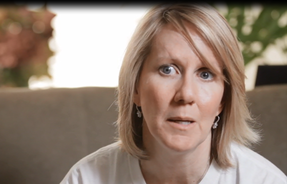 • We hear from Bob’s counterpart in Ohio, Mary O’Connor Shaver, a long-time contact of mine whom I hold in very high regard. Mary leads Ohio Voters for Companion Animals and she is on the front lines of fighting puppy mills in her state through public awareness and by advancing legislation. • We hear from people in the "weeds" of rescue like Mindi Callison of Bailing Out Benji who protests puppy mills weekly in an effort to educate the public and while saving mill dogs. • We learn about the incredibly powerful influence of the American Kennel Club related to dog breeding and the regular opposition of the AKC to common sense legislation to regulate that breeding. • And we learn about the staggering influence of "Big Agriculture" interests which fight incredibly hard to thwart legislation which would serve to help dogs using the "domino reasoning" that the legislation about dogs would surely lead to legislation about cows, pigs and chickens. In order to give more depth to this follow-up blog about the film, I solicited some input from three of the people you will see in the film. I would like to offer my heartfelt thanks to Christopher E. Grimes, Bob Baker and Mindi Callison for taking the time to answer some questions for me. Christopher E. Grimes, Director of Dog by Dog Q: What is the one thing that shocked you most about the subject of puppy mills during the course of producing the film? Bob Baker, Director, Missouri Alliance for Animal Legislation Q: Even though Proposition B (covered extensively in the film) was altered after the public vote, are you satisfied with the changes created by the legislation? Mindi Callison, Founder, Bailing Out Benji Q: There have been a number of documentary films made about the puppy mill industry. What do you think separates "Dog by Dog" from those other films? If you have not seen this film, I simply cannot urge you strongly enough to take 88 minutes out of your life to see it. The power to end puppy mills and regulate the commercial dog breeding industry rests with us. Yes, us. Mills will exist as long as we keep buying the products and until we learn about the incredibly powerful forces at work in our society that keep the industry alive and thriving. You will surely walk away from viewing the film wondering why in the world the mass production of dogs is even legal in America considering our otherwise progressive culture. (images courtesy of "Dog by Dog") 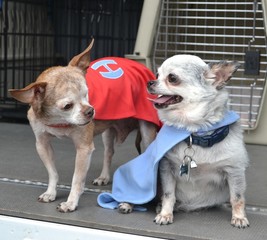 I can’t really recall when I first heard about puppy mill survivor Harley Taylor. Harley is such an iconic figure that – for me - his existence is both constant and timeless, as if I have always known about him. Harley was 10 years old and had been left in a bucket to die at a puppy mill when he was rescued. He was missing one eye (due to a power washer) and had a host of serious health problems. The fact that he was rescued and we all came to know his name is extraordinary in and of itself. The fact that he not only lived beyond all expectations (considering his health challenges), but went on to thrive and serve a Higher Purpose is simply beyond extraordinary. It is the stuff of legends. I’m sure that I first heard of Harley and his family, Rudi and Dan Taylor, related to his “Harley to the Rescue” missions. Harley and his best buddy Teddy would go on trips to save other mill dogs, decked out in their little superhero capes no less. Who could resist the concept? Although many of us only see the end result of rescue missions to save these dogs, the reality is that it is dirty, shocking and heart wrenching work. Having two little superhero dogs help save other dogs from terrible conditions not only made the rescue process immensely positive, but it also served a purpose: to help calm the newly rescued dogs. We will never know just what Harley and Teddy said to the new arrivals, but we all know that dogs have a language of their own and I'm sure it was something very reassuring. "You’re gonna be okay now. The bad stuff is over. People are gonna love you and take care of you. Really." Harley and Teddy helped save thousands of dogs over a period of years and raised an incredible amount of money to help save more mill dogs. 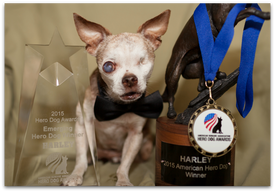 I did my first project about Harley for the Taylors in 2014 which was called “A Dream to Call My Own” and which used a Fisher song called “Home.” I knew the song was a perfect fit for Harley the first time I heard it and the video got a lot of positive feedback. When Harley was nominated to be the 2015 American Hero Dog in the “emerging hero” category, I was so proud just to be able to say I knew his family and had helped people learn more about him in some way. When I watched the Hero Dog ceremony on television and heard his name being read as the 2015 American Hero Dog, I both gasped and cried. I knew it was coming because the ceremony had been taped months before it was shown on the Hallmark Channel, but it still took my breath away. We did a second project related to Harley's award called “Change the World” which has a similar vibe to A Dream to Call My Own. 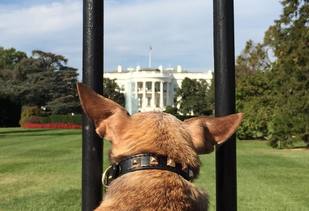 When the Taylors were later planning a trip to Washington D.C. to attend a Congressional Hearing called “Dog Day Afternoon on the Hill” and to seek an audience with the Top Dog (the President), I was thrilled to be asked to create a project specific to that visit. Harley did not get his paw-time with the POTUS (since Joe Biden chose that day to announce he would not run for office), but the Taylors learned later from an aide that the President had, in fact, seen the video called “Dear Mr. President.”  Harley passed away on March 20th of 2016. I again gasped and cried when I heard the news. My reaction made no sense, of course. He was not my dog and I had never met him in person, but like so many other people, I felt the loss just the same. I had spent so many hours using his images and video clips and interacting with the Taylors that I felt like I had always known Harley. I know my empathy grief was shared by countless other people around the world as I blogged a number of times about the loss of a larger than life soul in such a small body, his extraordinary time here and his legacy. Now as we approach the first year anniversary of his passing, I wanted to touch on the subject of his legacy yet again. In the time since Harley left this Earth, so very much has happened that I just can't list it all here. Harley’s family established the Harley Puppy Mill Action and Awareness Project to take his mission and his message to the public. They have since formed a new 501(c)(3) nonprofit called Harley’s Dream which is currently using donated funds to quite literally take the message to the streets through a national billboard campaign. Billboards are now on display in Chicago, Illinois; Denver, Colorado; Longmont, Colorado; San Diego, California; Orlando, Florida; Belton, Texas and at three locations in Minnesota. The billboards say simple yet captivating things like “Ask Harley What Happened to His Eye” and “Adopt, Don't Shop. End Puppy Mills.” A grassroots advocacy movement called Harley’s Heroes has begun and is growing with each month. It is a movement made up of ordinary people from across the country who are doing deeds both large and small to bring an end to the puppy mill industry. Some other highlights of note are: -Harley's Dream has a very active Twitter page and he has thousands of followers on his Facebook page. - There is an “Ask me about Puppy Mills” t-shirt fundraiser going on now with FLOAT (For the Love of All Things). - On online “Bidding for Change” Auction to benefit Harley’s Dream will begin in early April. Donations for Harley, Teddy and puppy mill related items are being accepted now. - Small change = BIG CHANGE donation jars are showing up in more and more businesses to collect small donations to continue Harley's legacy. - Billboards will be coming soon to Houston, Minneapolis/Saint Paul and Kansas City. - Harley’s Dream has been approved to accept Facebook fundraisers and there are already 5 in progress. - “Hops and Harley” will be held on June 24th in Berthoud, Colorado. There will also be an event which is still in the planning stages the day after Hops and Harley to celebrate Harley's life. I think all of us long in some way to be part of something much bigger than ourselves. To know that we are making a difference. Although my contributions to Harley’s efforts were very small, Harley and his family helped me to feel like I was part of something big in terms of social change and for that I will be forever grateful. The fact that I am still able to help preserve his legacy in some way is a privilege. I know that March 20th will be a very sad day for so many people. I'm sure I'll be sad too, but my plan is to just try really hard to make it a day of celebration instead. I hope you will join me. I am thankful Harley was rescued. I am grateful he was loved by a family who understood his Purpose and who are generous enough to share him with all of us. I know that I am forever changed thanks to the life of a little dog I never met but who means so very much to so very many people. And who is still changing the world each and every day. If you feel strongly about Harley's legacy and want to get involved as as way to channel your grief, please visit the Harley's Dream website. There are a number of suggestions listed there to help you. There is no donation too small. There is no act of advocacy too small. You can support a billboard. You can wear a Harley t-shirt as a conversation starter. You can write a letter to your local paper. You can join a Harley's Heroes group in your state and share ideas with people who share your values to work toward ending puppy mills. As Margaret Meade once wrote, "never doubt that a small group of thoughtful, committed citizens can change the world; indeed, it's the only thing that ever has." Harley changed the world. Let's keep his legacy strong. 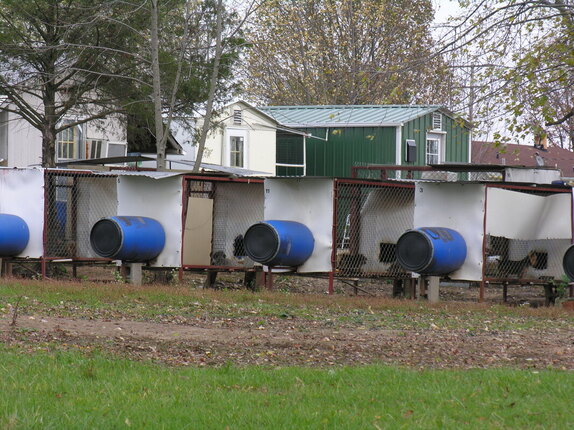 I got in a discussion with a contact of mine recently about the phrase "puppy mill." It was related to some differences of opinion about how many of us advocate to limit or end the commercial production of dogs (in ways which would shock and appall most of the dog-loving American public if they were to see, hear and smell the operations). This person and I do not agree on many topics, the most basic of which is use of the phrase "puppy mill." So, what does the phrase really mean? It depends on who you ask. For some, a puppy mill is a dog breeding operation, either large or small, in which profit is the focus of the business and in which the well-being of the dogs is of little concern or at least secondary concern. Dogs from this type of breeding operation routinely spend their entire lives in small cages. Many of the cages are wire crates which lack solid floors and are no larger than your dishwasher. The dogs are more often than not physically injured or psychologically scarred from the conditions in which they are forced to live and they receive no veterinary care at all. They have cancers, are missing eyes and parts of limbs, their teeth are likely rotted and they may have a host of other serious health issues which go unseen. They are bred repeatedly until they are no longer capable of producing profitable puppies. This is the type of business which is routinely the subject of media reports, articles written by journalists and solicitations for donations made by large animal welfare organizations. For others, a puppy mill is any commercial dog breeding operation at all even if the dogs are treated with a greater level of attention and receive regular veterinary care. Most of these dogs also spend their entire lives in cages but are simply treated better. Some are socialized, given time to exercise outside of their cages and are better prepared to be someone’s beloved pet. (For the sake of this discussion, the word "commercial" is intended to mean a money-making business which exists for the sole purpose of producing dogs to be sold to the public in some way.) There are some who go one step further and fault all dog breeding operations, even those by responsible breeders who only breed dogs periodically for families, for breed competitions or for use in some service capacity. These people proclaim that we should not "breed or buy while shelter dogs die" and see all breeders as the enemy. Looking at the words which make up the phrase, we all know what the word "puppy" means. It refers to a young dog. The word "mill" is also understood by most people. It has historically meant a building equipped with machinery for grinding grain into flour. It can also mean a factory for certain kinds of manufacture such as paper, steel, or textiles. More recently, the word has been used to describe a business or institution that dispenses products or services in an impersonal or mechanical manner, as if produced in a factory. Examples include "divorce mill" or "diploma mill." I have been told that those who breed dogs for a living, regardless of where they are located, take great offense at the phrase "puppy mill." I am told that to them, the phrase is the equivalent of a racial or ethnic slur and that if we are ever to reform the commercial dog breeding industry, we need to stop using the phrase "puppy mill" so we don’t offend these people. I simply do not agree. I have no issue whatsoever with using the phrase puppy mill to describe commercial dog breeding operations. I would not call my dentist (who breeds Black Russian Terriers for dog competitions) a puppy miller because she is a responsible breeder who has had very few litters of puppies in the almost two decades we have known each other. Her breeding of Black Russian Terriers is to perpetuate breed standards and her dogs have competed in major competitions. When looking beyond these small-time breeding operations like hers, I focus on the meanings of the individual words. Puppies are being produced. They are being produced in a factory or mill-like manner for profit. So for me, a puppy mill is any industry which produces dogs on a regular basis in any volume as a money-making venture. I appreciate the fact that some dog breeders are not happy with use of the phrase puppy mill. I presume that people who raise dogs as part of a multi-generation family business and who work hard to care for the dogs don't like being labeled in a way which causes them to be perceived in the same way as are those who see dogs as inventory, caring little for the well-being of the "breeder stock." To those people who feel offended, I would say this. The phrase is used to describe behavior related to a chosen profession producing dogs for profit. If you find the phrase offensive, that is because you are interpreting it personally, as if it is a personal attack on you as an individual. It is not. It is a reference to your mass production of dogs in an industrial or mill-like manner. If yours is an operation about which you are proud and which bears no resemblance to the types of horrid operations we read about in articles or see in programs on Animal Planet or see as the subject of marketing campaigns to solicit money to stop the objectification and abuse of dogs, by all means be proud of what you are doing. People like me will continue to seek better for dogs until we find ways as a society to either limit your production of dogs or we find ways to ensure your dogs live in better conditions more in keeping with public expectations. And then police your own industry. If you don’t want to be compared to those "lesser" operations producing dogs which horrify us all, please put your damaged feelings aside and acknowledge that there are those who share your profession who allow dogs to suffer, who abuse dogs and who neglect dogs. Work in your own way to advocate yourselves to improve your industry as a whole. Advocacy is about speaking out about things we want to change in our society. When it comes to animal welfare advocacy, we speak out on behalf of the animals who cannot speak for themselves. I think we need to careful to not blame the messenger for the fact that the message was necessary in the first place. The animal-loving public is becoming increasingly aware of, and alarmed by, what takes place in the commercial dog breeding industry. We don’t hate those who breed dogs in mass quantities as people. We disapprove of their behavior. And we want it to change or stop. Using the phrase "puppy mill" to help educate the public serves a purpose as our use of language is molded and shaped to fit our culture. It is a tool to communicate a concept. (images courtesy of Pet Shop Puppies, Inc. and George Hodan)
|
AuthorI am an animal welfare advocate. My goal is to help people understand some basic issues related to companion animals in America. Awareness leads to education leads to action leads to change. Archives
July 2024
Categories
All
image courtesy of Terrah Johnson
|


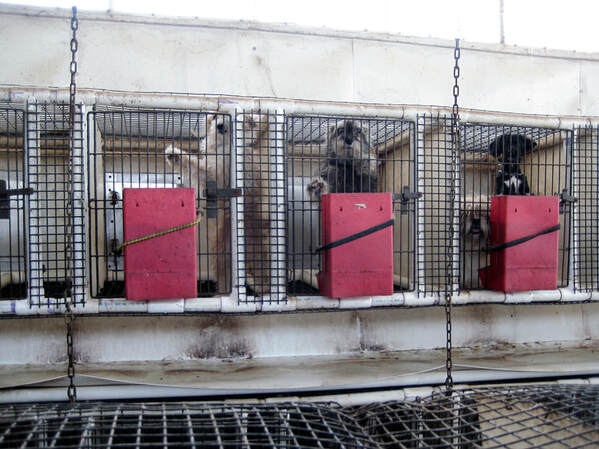
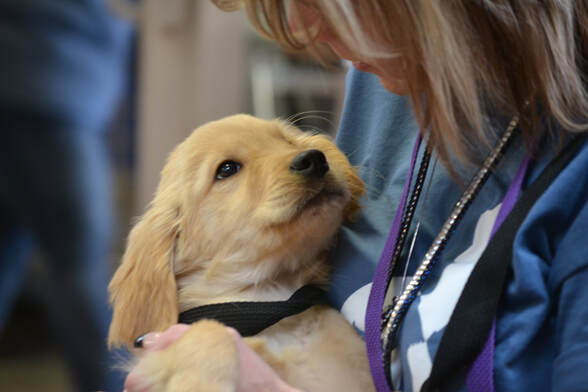
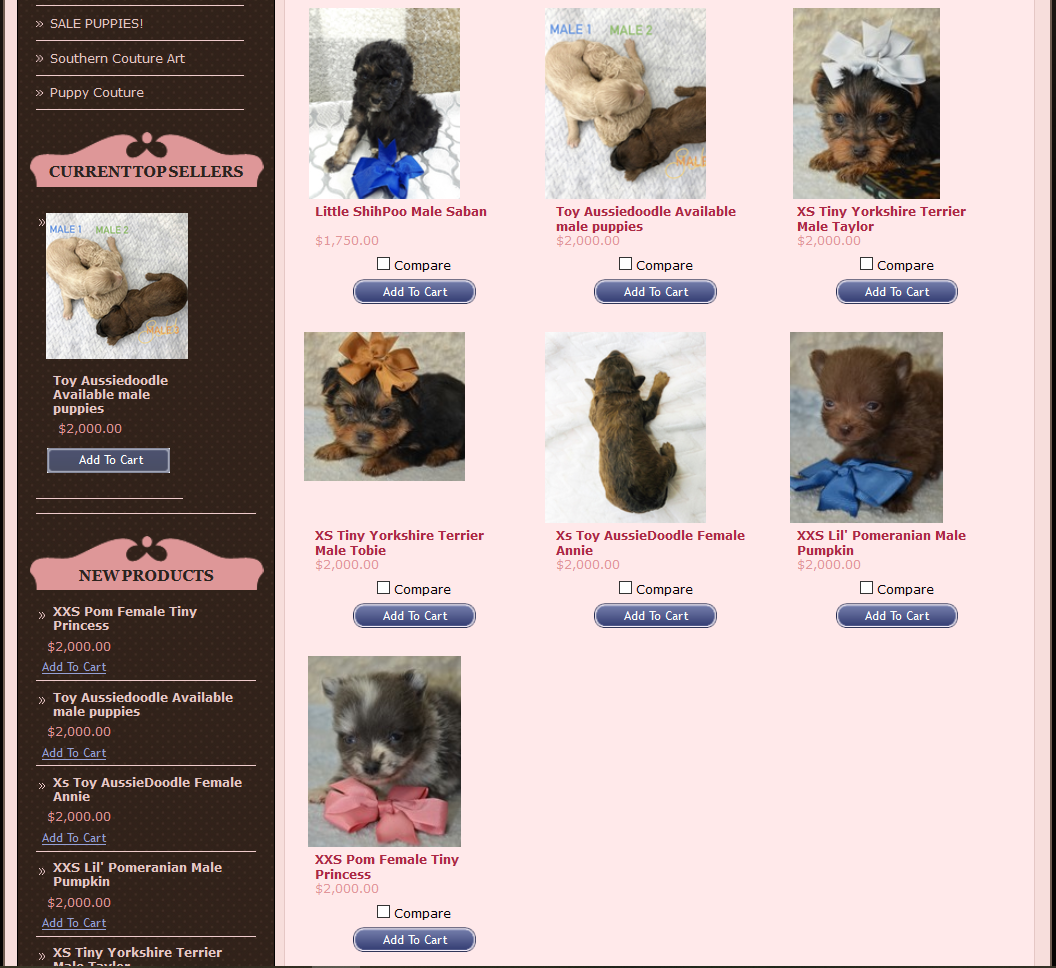

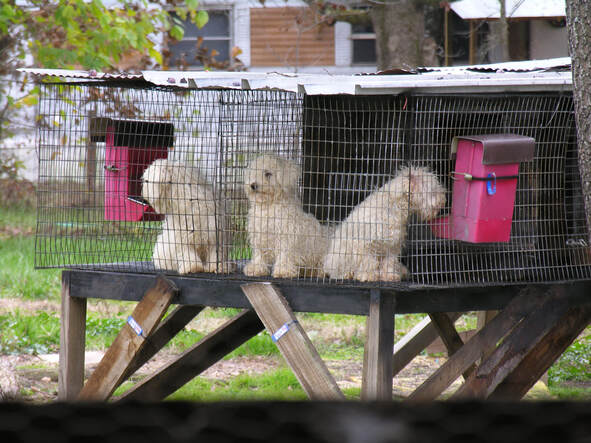
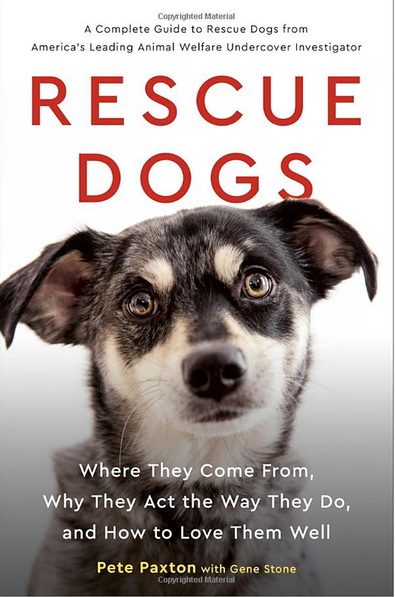
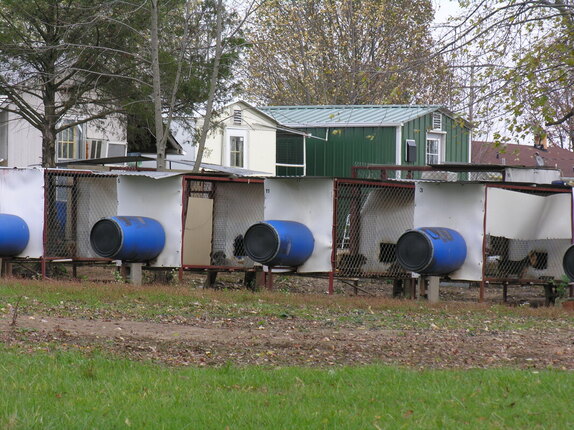
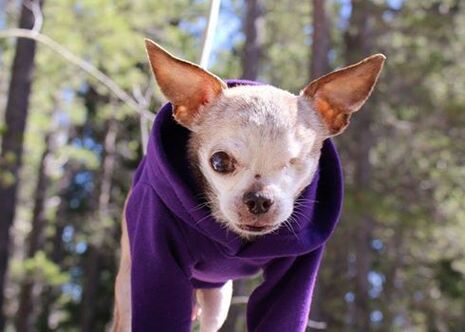
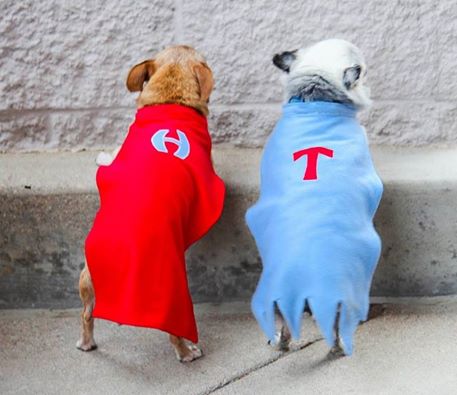
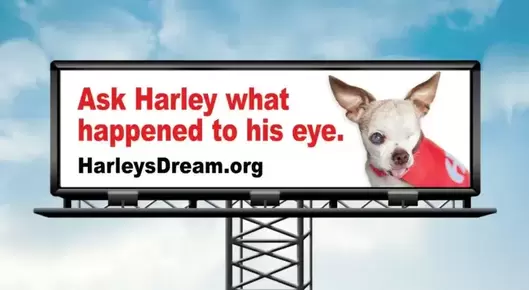
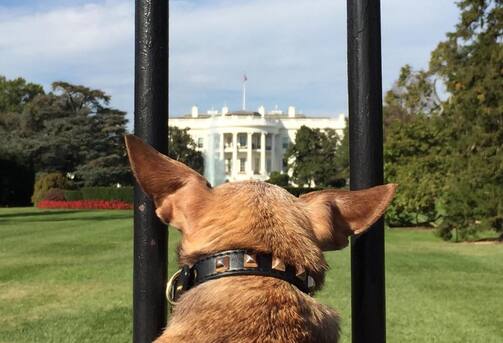




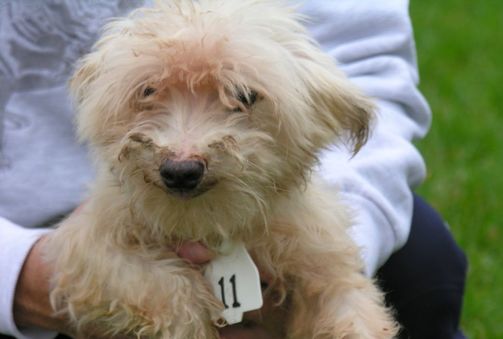
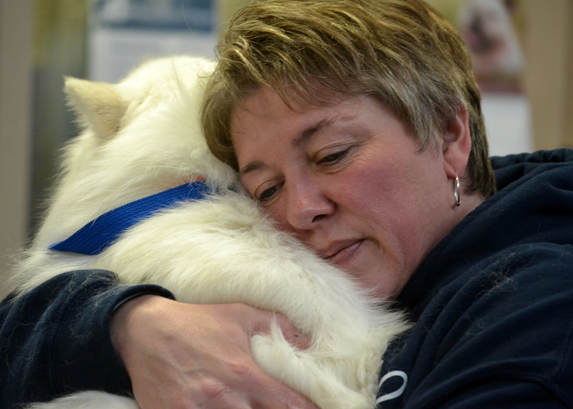

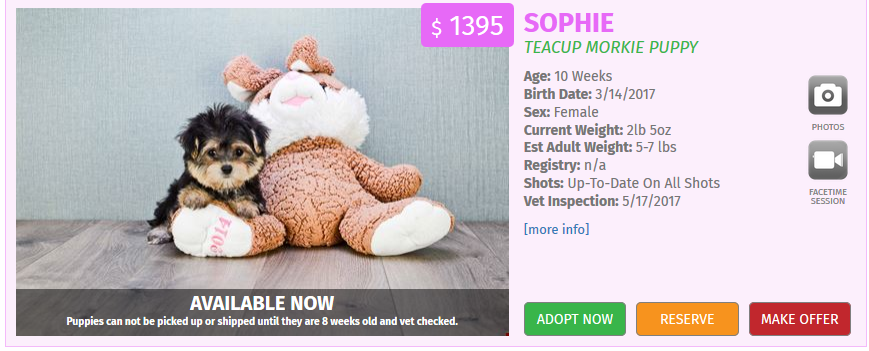
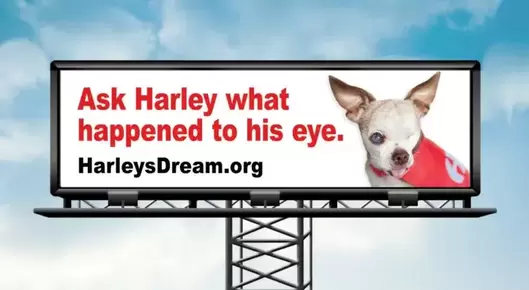
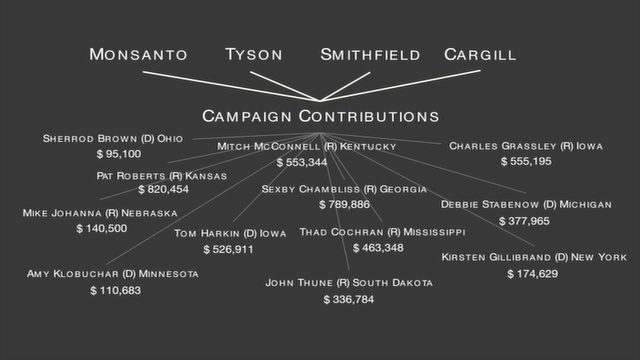
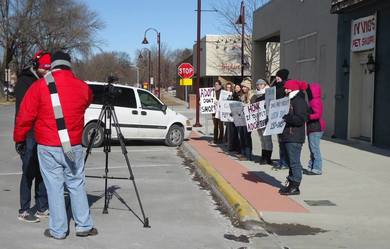
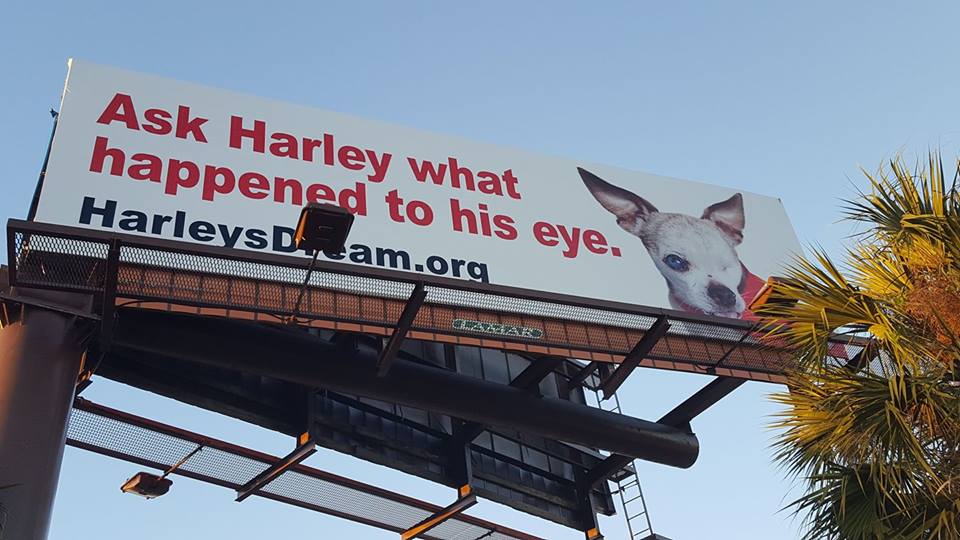
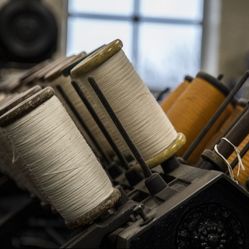
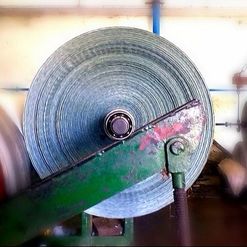
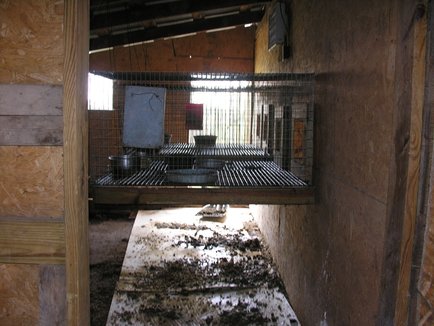
 RSS Feed
RSS Feed